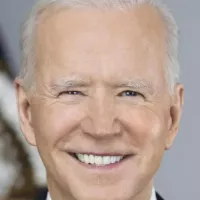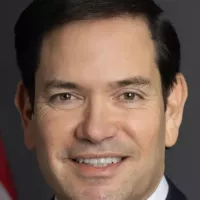The Consumer Financial Protection Bureau (CFPB) is a U.S. government agency focused on protecting consumers in the financial sector. It oversees various financial institutions, including banks, credit unions, lenders, and debt collectors, ensuring they comply with federal consumer financial laws. The CFPB's mission includes writing and enforcing rules, supervising financial companies, and educating consumers about financial products and services.
1982: Alternative Mortgage Transaction Parity Act of 1982
In 1982, the Alternative Mortgage Transaction Parity Act of 1982 (Regulation D) was enacted and is one of the regulations implemented by the Bureau.
1998: Federal Vacancies Reform Act
The Federal Vacancies Reform Act of 1998 was cited by President Trump to appoint Mick Mulvaney as acting director of the CFPB on November 24, 2017.
2007: Elizabeth Warren Proposed CFPB
In 2007, Elizabeth Warren, then a Harvard Law School professor, proposed the creation of the CFPB.
2007: CFPB Proposed by Elizabeth Warren
In 2007, Elizabeth Warren, then a law professor, originally proposed the idea for what would become the Consumer Financial Protection Bureau (CFPB).
2008: Great Recession
In 2008, the Great Recession served as a catalyst for the creation of the CFPB.
2008: Financial Crisis of 2008
The financial crisis of 2008, which led to the Great Recession, served as a catalyst for the creation of the CFPB. In 2010, the Dodd-Frank Act was passed in response to the crisis.
July 2010: Dodd-Frank Act Passed by Congress
In July 2010, Congress passed the Dodd–Frank Wall Street Reform and Consumer Protection Act in response to the Great Recession and 2008 financial crisis.
September 17, 2010: Obama Appoints Warren to Establish CFPB
On September 17, 2010, President Barack Obama announced the appointment of Elizabeth Warren as Assistant to the President and Special Advisor to the Secretary of the Treasury to set up the new agency.
2010: Dodd-Frank Act Authorizes CFPB
In 2010, the Dodd–Frank Wall Street Reform and Consumer Protection Act was passed in response to the 2008 financial crisis, authorizing the creation of the Consumer Financial Protection Bureau (CFPB).
February 2011: CFPB Opens Website for Consumer Suggestions
In early February 2011, the CFPB launched its website to gather suggestions from consumers through platforms like YouTube, Twitter, and its own interface.
July 21, 2011: CFPB Formally Begins Operation
The CFPB formally began operation on July 21, 2011.
2011: CFPB Database Established
Since the CFPB database was established in 2011, more than four million complaints have been published.
January 4, 2012: Obama Issues Recess Appointment for Cordray
On January 4, 2012, Barack Obama issued a recess appointment to install Richard Cordray as director of the CFPB through the end of 2013.
June 21, 2012: Lawsuit filed against CFPB by Texas bank
On June 21, 2012, a Texas bank and the Competitive Enterprise Institute filed a lawsuit challenging the constitutionality of provisions of the CFPB.
July 12, 2013: Government Accountability Office Investigation Commenced
On July 12, 2013, a Government Accountability Office investigation commenced, prompted by concerns over the CFPB's overreaching demands for and mining of personal financial information of American citizens.
July 16, 2013: Senate Confirms Cordray as CFPB Director
On July 16, 2013, the Senate confirmed Richard Cordray as director of the CFPB in a 66–34 vote.
July 22, 2013: Lawsuit filed against CFPB by Morgan Drexen Integrated Systems
On July 22, 2013, Morgan Drexen Integrated Systems and attorney Kimberly A. Pisinski filed a lawsuit challenging the constitutionality of the CFPB, alleging the CFPB's structure insulates it from political accountability and internal checks and balances.
August 2013: Lawsuit against CFPB dismissed
In August 2013, a federal judge dismissed the lawsuit that was filed against CFPB, because the plaintiffs had failed to show that they had suffered harm.
August 22, 2013: CFPB files lawsuit against Morgan Drexen
On August 22, 2013, the CFPB filed a lawsuit against Morgan Drexen alleging that they charged advance fees for debt relief services in violation of the Telemarketing Sales Rule and engaged in deceptive acts and practices in violation of the Consumer Financial Protection Act (CFPA).
September 26, 2013: Consumer Financial Protection Safety and Soundness Improvement Act introduced
On September 26, 2013, the Consumer Financial Protection Safety and Soundness Improvement Act of 2013 (H.R. 3193; 113th Congress) was introduced into the United States House of Representatives. The bill aimed to create a five-person commission, remove the CFPB from the Federal Reserve System, rename it the "Financial Product Safety Commission", and make it easier to override CFPB decisions.
2013: Ally Financial Pays $98 Million in Fines and Settlement Fees
In 2013, Ally Financial paid $98 million in fines and settlement fees.
2013: End of Cordray's Recess Appointment
In 2013, Richard Cordray's recess appointment as director of the CFPB was set to end, leading to further Senate action on his nomination.
2013: House Committee Criticizes CFPB Structure
In 2013, a press release from the United States House Financial Services Committee criticized the CFPB for its "radical structure" and lack of accountability.
2014: Allegations of Racism and Sexism at CFPB
In 2014, some employees and former employees of the CFPB testified before Congress about an alleged culture of racism and sexism at the agency.
2014: CFPB Addresses Risks of Cryptocurrencies
In 2014, the CFPB attempted to help consumers understand the risks associated with cryptocurrencies.
July 2015: Court of Appeals partially affirms and reverses decision
In July 2015, the United States Court of Appeals for the District of Columbia Circuit affirmed in part and reversed in part, holding that the bank, but not the states that later joined the lawsuit, had standing to challenge the law, and returned the case for further proceedings.
2015: CFPB Yet to Compensate Victims of Ally's Practices
As of late 2015, the CFPB had yet to compensate any individuals who were victims of Ally's allegedly discriminatory practices.
October 2016: Court of Appeals rules on CFPB director removal
In October 2016, the Court of Appeals for the District of Columbia Circuit ruled that it was unconstitutional for the CFPB director to be removable by the president of the United States only for cause. The court also addressed a new interpretation of the Real Estate Settlement Procedures Act.
2016: CFPB Compiles Consumer Complaints
In 2016, the CFPB received and compiled hundreds and thousands of consumer complaints about financial services, including banks and credit card issuers, making them publicly available on a federal government database.
2016: CFPB Takes First Enforcement Action on Data Privacy
In 2016, the CFPB took its first enforcement action against a company that the CFPB alleged had failed to properly protect the privacy and security of consumers' data.
2016: House Votes to Overturn CFPB Guidance
In 2016, the House voted to overturn the CFPB's 2013 guidance on identifying racial discrimination among auto lenders.
June 8, 2017: House Passes Financial CHOICE Act
On June 8, 2017, the House passed the Financial CHOICE Act, proposed by Jeb Hensarling, to repeal the Dodd–Frank Wall Street Reform and Consumer Protection Act.
June 2017: Senate Crafting Reform Bill
In June 2017, the Senate was in the process of crafting its own reform bill related to financial regulations.
November 24, 2017: Cordray appoints English, Trump appoints Mulvaney
On November 24, 2017, Director Cordray appointed Leandra English as deputy director and indicated she would become acting director upon his resignation that day. However, President Trump appointed Mick Mulvaney as acting director, citing the Federal Vacancies Reform Act of 1998.
November 28, 2017: Court denies English's motion, Mulvaney serves as acting director
On November 28, 2017, U.S. District Judge Timothy J. Kelly denied Leandra English's motion for a preliminary injunction, allowing Mick Mulvaney to serve as CFPB acting director.
2017: CFPB Achievements Since Creation
From its creation until 2017, the CFPB curtailed abusive debt collection practices, reformed mortgage lending, publicized and investigated hundreds of thousands of complaints from aggrieved customers of financial institutions, and extracted nearly $12 billion for 29 million consumers in refunds and canceled debts.
2017: CFPB rule blocked lenders
In 2017, CFPB rule blocked lenders to attempt to collect funds from borrowers' accounts after two consecutive failed attempts, unless the borrower had consented.
2017: Congressional Hearings on CFPB Consumer Complaint Database
In 2017, testimony in US Congressional hearings elicited concerns about the CFPB's wholesale publication of consumer complaints, suggesting it could be misleading and harmful to the consumer market.
2017: Cordray Resigns to Run for Governor
In late 2017, Richard Cordray resigned from his position as director of the CFPB to run for governor of Ohio.
January 31, 2018: En banc D.C. Circuit finds CFPB structure constitutional
On January 31, 2018, the en banc D.C. Circuit found that the CFPB's structure was constitutional by a vote of 7–3, reversing the earlier decision.
May 21, 2018: Trump Signs Legislation Repealing Auto Lending Rules
On May 21, 2018, US President Donald Trump signed into law Congressional legislation repealing the enforcement of automobile lending rules.
May 24, 2018: Trump Signs Economic Growth, Regulatory Relief and Consumer Protection Act
On May 24, 2018, President Trump signed into law the Economic Growth, Regulatory Relief and Consumer Protection Act, exempting dozens of banks from the CFPB's regulations.
June 5, 2018: Mulvaney Removes Consumer Advisory Board Members
On June 5, 2018, Mick Mulvaney, as acting director of the CFPB, removed all 25 members of the agency's Consumer Advisory Board after they criticized him.
June 2018: Judge Loretta Preska rules against CFPB structure
In June 2018, New York Federal District Court judge Loretta Preska ruled against the structure of the CFPB.
2018: Ninth Circuit affirms District Court ruling
In 2018, Seila Law's appeal to the Ninth Circuit was dismissed. The 9th Circuit panel affirmed the District Court's ruling, and agreed that the Supreme Court's prior decisions upholding for-cause removal in Humphrey's Executor and Morrison were controlling.
2018: Community Financial Services Association of America sues the CFPB
In 2018, the Community Financial Services Association of America sued the CFPB over its 2017 rule that blocked lenders to attempt to collect funds from borrowers' accounts after two consecutive failed attempts, unless the borrower had consented.
2018: Circuit split on the question presented in Seila Law
In 2018, there was arguably a circuit split on the question presented in Seila Law. While the Ninth Circuit and DC Circuit had held that the CFPB's structure is constitutional, the Fifth Circuit in Collins v. Mnuchin (2018) held that the structure of the Federal Housing Finance Agency violated the separation of powers.
January 2019: Supreme Court denies review of DC Circuit Court decision
In January 2019, the Supreme Court denied review of the DC Circuit Court decision regarding the constitutionality of the CFPB's structure.
October 2019: Supreme Court to review CFPB constitutionality
In October 2019, the Supreme Court announced it would review the constitutionality of the Bureau's structure in the case Seila Law v. Consumer Financial Protection Bureau.
October 18, 2019: Supreme Court granted certiorari in Seila Law
On October 18, 2019, the Supreme Court granted certiorari in Seila Law and heard oral argument on March 3, 2020.
March 3, 2020: Oral arguments begin in Seila Law v. CFPB
On March 3, 2020, oral arguments began in the Supreme Court case Seila Law v. Consumer Financial Protection Bureau, concerning the constitutionality of the CFPB's structure.
June 2020: Supreme Court Rules on CFPB Director Removal
In June 2020, the United States Supreme Court ruled that the president can remove the director of the CFPB without cause, but the agency could remain in operation.
June 29, 2020: Supreme Court rules on CFPB director's firing protections
On June 29, 2020, the Supreme Court ruled in a 5–4 decision that the firing protections of the CFPB director are an unconstitutional restraint on the president's ability to oversee executive branch agencies. However, the court determined the statutes around the Director's position were severable from the remaining structure of the CFPB.
February 13, 2021: Biden Nominates Chopra as CFPB Director
On February 13, 2021, President Joe Biden formally submitted to the Senate the nomination of Rohit Chopra to serve as director of the CFPB.
September 30, 2021: Chopra's Nomination Approved
On September 30, 2021, Rohit Chopra's nomination as director of the CFPB was approved by the Senate with a 50–48 vote.
December 2021: CFPB Fines LendUp
In December 2021, the CFPB fined LendUp $100,000 due to deceptive marketing and fair lending violations, and the company was required to stop issuing new loans.
October 2022: Fifth Circuit rules CFPB funding structure unconstitutional
In October 2022, the Fifth Circuit ruled in favor of the Community Financial Services Association of America, deeming that CFPB's funding structure was unconstitutional.
May 2024: Supreme Court upholds CFPB's funding mechanism
In May 2024, the US Supreme Court reversed the 5th Circuit and upheld the CFPB's funding mechanism in a 7–2 decision written by Justice Clarence Thomas.
June 2024: CFPB Proposes Ban on Medical Debt Use in Credit Reports
In June 2024, the CFPB proposed banning the use of medical debt in credit reports or loan decisions.
July 2024: CFPB Investigates Zelle's Handling of Fraud and Scams
In July 2024, the CFPB gave Zelle a choice between a settlement or litigation around its handling of fraud and scams on its platform.
2024: CFPB Recoveries for Consumers Reach $19 Billion
By 2024, the CFPB had recovered $19 billion for consumers in refunds and canceled debts.
2024: CFPB Limits Credit Card Late Fees
In 2024, the CFPB limited credit card late fees to $8. The rule was blocked by a judge, but the reason given for the block was overturned by the Supreme Court.
2024: Supreme Court Affirms CFPB Funding Mechanism
In 2024, the Supreme Court affirmed the constitutionality of the CFPB's funding mechanism as prescribed by Congress.
February 1, 2025: Chopra Fired, Martinez Becomes Acting Director
On February 1, 2025, CFPB Director Chopra was fired by President Donald Trump, and deputy director Zixta Martinez became the acting director of the agency by operation of law.
February 11, 2025: Vought Restores CFPB Procedures for Mortgage Markets
On February 11, 2025, Russell Vought restored the CFPB procedures that sustain the mortgage markets.
February 14, 2025: CFPB Website Displays 404 Error
As of February 14, 2025, the CFPB's website homepage displayed a 404 error, and all content from the agency's social media accounts had been removed.
February 2025: CFPB Targeted by Government Efficiency Department
In February 2025, the CFPB became a target of the Department of Government Efficiency as part of Trump's cost-cutting agenda, with staffers gaining access to consumers' data.
Mentioned in this timeline

Donald John Trump is an American politician media personality and...

Elizabeth Warren is a prominent American politician and the senior...

Barack Obama the th U S President - was the...
The United States of America is a federal republic located...

Joe Biden a member of the Democratic Party served as...

Russell Vought is an American conservative political analyst and government...
Trending

3 months ago Kim Kardashian's Teenage Photo Sparks Childhood Questions for Khloe and Revlon lipstick comeback.
1 month ago Seattle Thanksgiving Weather: Records, Calming, and Possible Cold Patterns Looming Ahead
2 months ago Predictions for WTA Jiujiang Day 1: Putintseva vs. Jimenez Kasintseva, Seidel's performance

3 months ago Sonay Kartal Advances to Beijing Round 3, Defeating Kasatkina Again

9 months ago YNW Melly Faces Death Penalty Retrial in September Amid Murder Case

Nyjah Huston is a highly accomplished American professional skateboarder recognized as one of the world's highest-paid in his field He...
Popular

Stranger Things created by the Duffer Brothers is a popular...

XXXTentacion born Jahseh Dwayne Ricardo Onfroy was a controversial yet...

Kelsey Grammer is an accomplished American actor producer and singer...

Candace Owens is an American conservative political commentator and author...

Bernie Sanders is a prominent American politician currently serving as...

Marco Rubio is an American politician attorney and diplomat He...